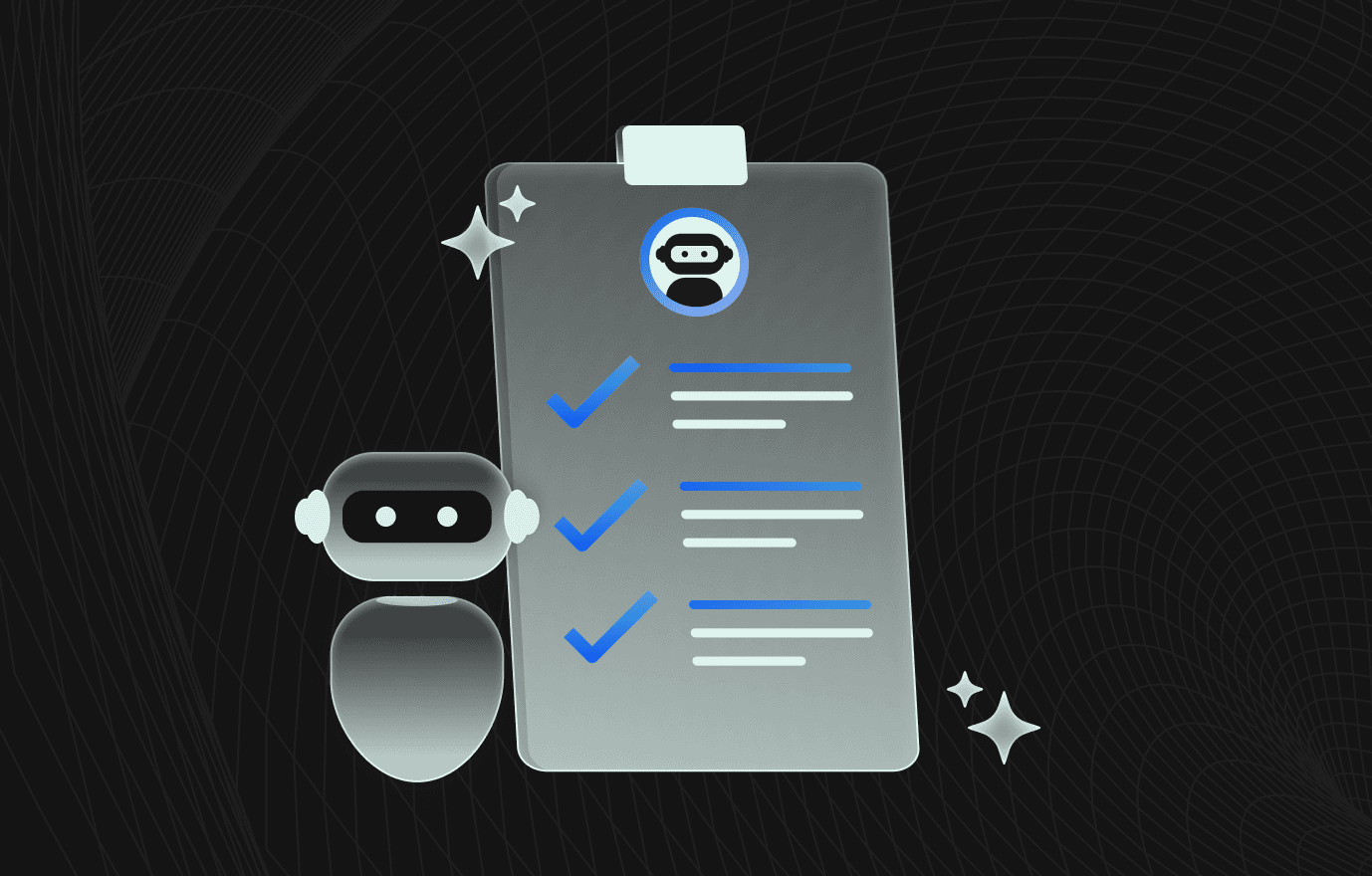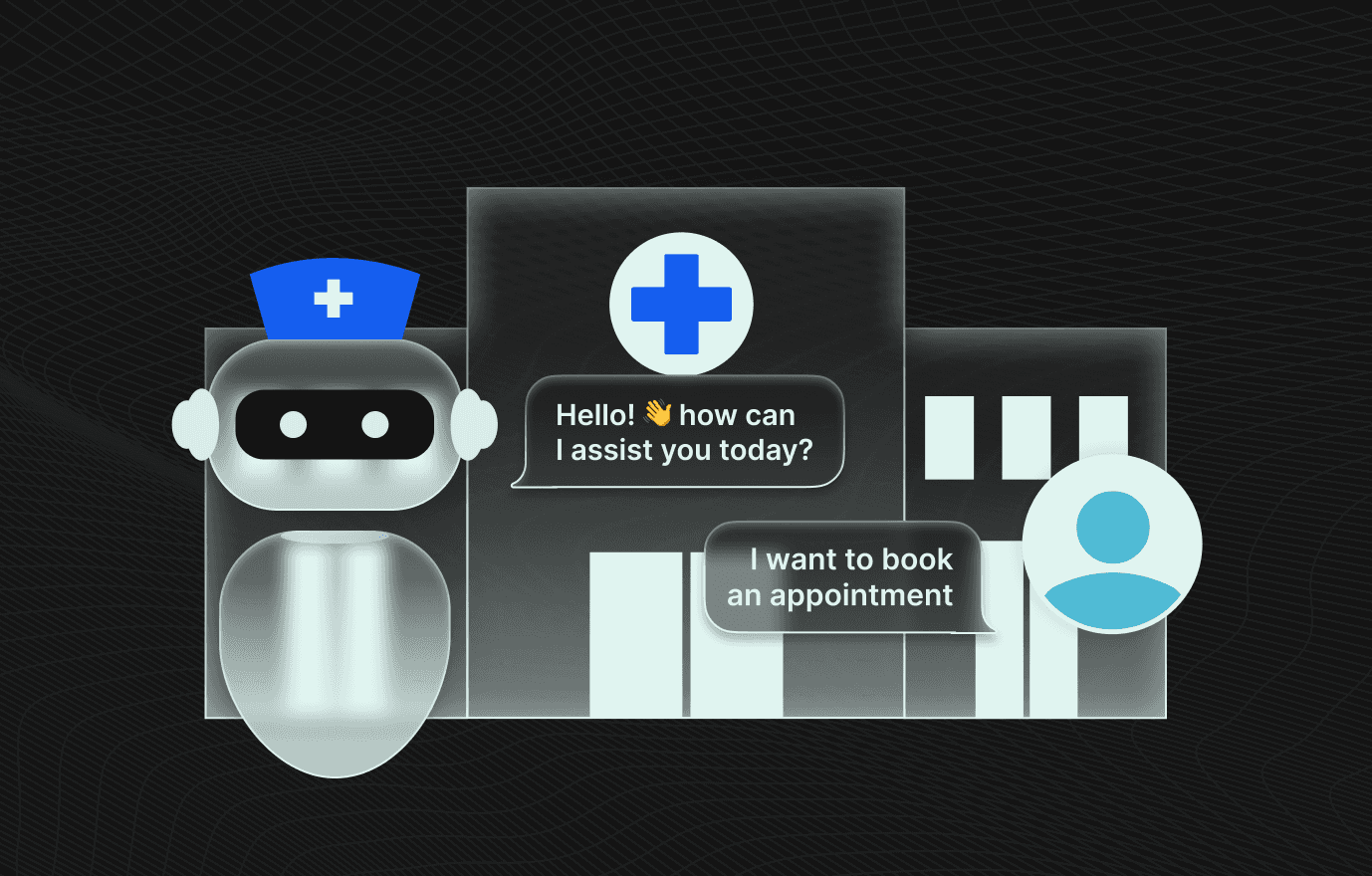Customer Experience /
10 Min read
Customer Feedback Surveys: 6 Ways to Automate Them in 2025
December 26, 2022
Bhavyadeep Sinh Rathod
Content Editor, WotNot
Customer feedback is about asking people what they think about your business and product/s.
This is an important aspect as these insights help you improve your business and find new avenues for business growth.
But, many times, asking for feedback is not easy, especially when you have a large customer base. To solve this issue, you need the magic of automation.
Today, many businesses are leveraging automated customer feedback surveys to gain critical data points that help them to improve their offerings.
If you are also running a business that is in dire need of an automated customer feedback survey, then you are at the right place.
Here, we are going to discuss customer feedback surveys, what they are, their types, the need for automation, ways to implement automated surveys, and many more. So, without further ado, let’s get started.
What is a Customer Feedback Survey?
As stated, it’s a formal way of obtaining responses, reactions, comments, text or video testimonials, and other valuable insights from your customers using surveys or questionnaires.
A customer feedback survey is an active feedback that is taken explicitly from customers. It’s extremely important to your product team if you want to take a customer-centric approach to improve your product.
There are several options for conducting a feedback survey, such as paper comment cards, emails, websites, phones, etc.
However, an online survey is recommended as businesses have CRM software with customer email addresses. It increases customer reach. Plus, it’s cost-effective because you don’t have to budget for mailing and printing costs.
Most importantly, customers prefer taking a 5-min online survey rather than speaking to a customer support executive for 15 minutes on call.
Types of Customer Feedback Surveys
Sending out customer feedback surveys is not the difficult part. The tough part is sending customer feedback surveys that provide valuable information. For that, you need to make sure you’re asking the right questions. You need to decide what you want to know and why.
Here are the four most effective feedback options you can use to understand your customers and gain valuable insights.
1. Product/Service Survey
This is a feedback survey that helps you assess customer needs and find out how satisfied they are with your product/service, which helps improve customer retention.

Some questions that you can ask in this survey include:
How long have you been using this product?
Does this product help you achieve your goals?
What product features do you like the most?
What improvements would you make if given a chance?
If there’s any new feature that you would like to suggest, what would be that?
2. Customer Satisfaction Survey
You can conduct this survey to understand the satisfaction level of your customers. It contains a simple question with a binary response(true/false, happy/sad, good/bad, yes/no).

The above image is an example of a customer satisfaction survey question. In addition, you can also ask questions like:
Did our product do what you wanted it to do?
Rate your satisfaction with our team in providing prompt service
How likely are you to return to our website?
3. Customer Effort Scores Survey
Customer Effort Scores survey measures the efforts it takes for your customers to use the product or fix the problem with customer support.

The easiest CES question would be: how convenient do you find our product? with a 5-point scale option:
Very convenient
Convenient
Neither convenient nor inconvenient
Inconvenient
Very inconvenient
4. Customer Churn Feedback Survey
Customer churn is the act of terminating a customer relationship. This feedback survey helps you understand the reasons your customers churn and how you can improve your products to prevent future customers from leaving or canceling the subscription.
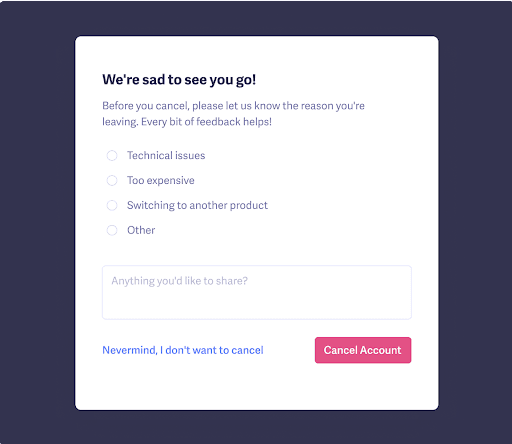
Here, you can ask customers the questions about their leaving/canceling. For example:
Why have you decided to cancel the subscription?
What are the main reasons for your cancellation?
How likely are you to return?
While conducting customer feedback surveys could be tricky, the right questions and clear survey goals can highlight valuable insights.
But one question still remains the same - should you automate the customer survey feedback? If yes, why?
Why Use Automated Customer Service Surveys?
While manual customer feedback is expensive and demands too much time and resources, as it’s prone to human errors, automated feedback is straightforward. It helps you gather feedback on an ongoing basis and customers are more likely to give honest opinions.
Contextual surveys are sent to customers at the right time so that the response rates are higher, thus giving you more data to work on.
There are substantial benefits of automating feedback collection.
1. Collect Valuable Insights Seamlessly
Automated questionnaires for customer feedback simplify the process. While it is possible to contact each person on your list individually, as your business expands, doing so will become costly and time-consuming. With an automated feedback survey, you can establish a direct line of connection with your clients that allows you to collect crucial input directly from them on a large scale.
2. Provide Proactive Customer Service
No matter how many lessons you learn from user input, they won't be useful unless you establish a feedback loop.
With automation, you can determine the appropriate course of action and send surveys at various user journey stages. It will make it simpler for you to locate friction areas and take steps to eliminate them.
Automation and analytics will further help you recognize recurring themes that need to be addressed to avoid the same problems for future customers.
3. Trigger Experience Flows
As mentioned above, automated feedback is crucial for enhancing the client experience. When you send out surveys, and people answer, you can create automated experience flows.
These experience flows may be started in response to user comments. You can improve the user experience to boost consumer engagement and retention.
4. Discover Upsell Opportunities
Even happy consumers might offer insightful criticism on how to enhance your goods or services. Perhaps you don't sell a certain color of a product, or something on the website is unclear. In either case, there is always space for advancement, which leads to customer upsells.
The automation of the feedback survey can help you gather this information in a concise and organized way.
5. Dive Deep into Insight and Analyze Feedback
Automating consumer feedback will provide you a ton of useful insights. As these insights originate from all significant customer journey touchpoints, you can utilize these data to identify trends. Additionally, you should gather and analyze qualitative data to comprehend the factors that led to each customer's answer.
6. Reduce Customer Churn
Another reason to automate customer feedback collection is customer churn. The survey questions can assist you in identifying which customers are likely to churn based on the survey responses, such as a low satisfaction score.
You may, then, get in touch with them and offer them tailored solutions to boost satisfaction and encourage repeat business.
7. Retain Customers
Studies show that repeat customers are likely to spend 67% more than the new customers. By automating and preventing problems, you help customers feel more loyal to your brand and come back for more.
When you automate your customer feedback loop, you position yourself for success. It may be a daunting task but with best practices and appropriate tools, you can keep your customers happy.
6 Ways to Automate Customer Feedback Surveys
Creating online customer feedback surveys is incredibly simple these days. You can leverage different platforms and tools to gain valuable information related to your customers. Let’s have a look at the different ways you can automate customer feedback surveys.
1. Create Triggered Contextual Website Survey
You might be aware of creating use-case specific micro surveys for businesses. For example, net promoter score, customer satisfaction survey, customer effort scores survey, and so on.
So, the idea is to create context-driven surveys that will help you understand user problems. For example, if a streaming service wants to know if users are enjoying their services, they can take an in-between service survey, such as a simple net promoter score from 1 to 10 after they are done watching their favorite series.
The best example would be Youtube. Often in-between ads or in ad forms, the platform conducts surveys to enhance our experience.
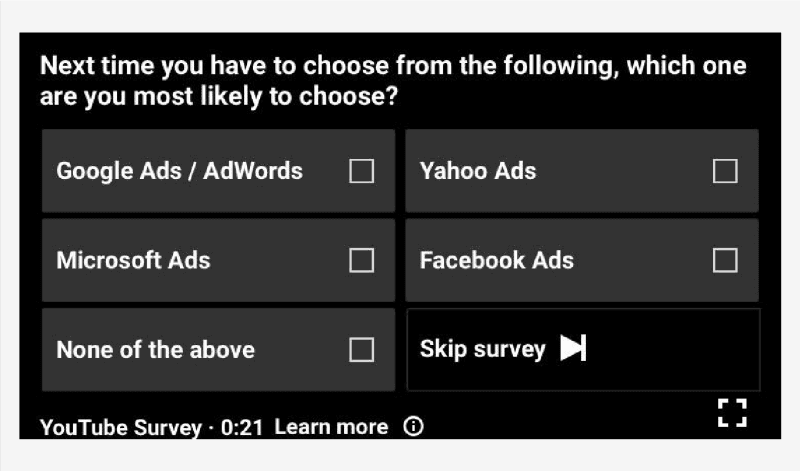
You, as a business, could do something like that. You can pre-define a set of questions and set it for specific intervals. Say you have an eCommerce store, so you can set the defined shopping experience-related questions and trigger it post-purchase.
2. Go for In-messaging Survey
This is the survey approach that we all have come across daily. Whether we are ordering food, subscribing to a new platform, booking tickets online, or shopping.
As a business, you might be sending several messages to your customers in a year in the form of invoices, bills, receipts, reminders, updates, etc.
So, the idea to automate feedback collection through messaging is to attach the survey form along with the messages that you send.
For example, while sending a booking confirmation message, you can send the survey form link or QR code with it, asking about their experience. You can use the best QR code generator to convert your surveys.
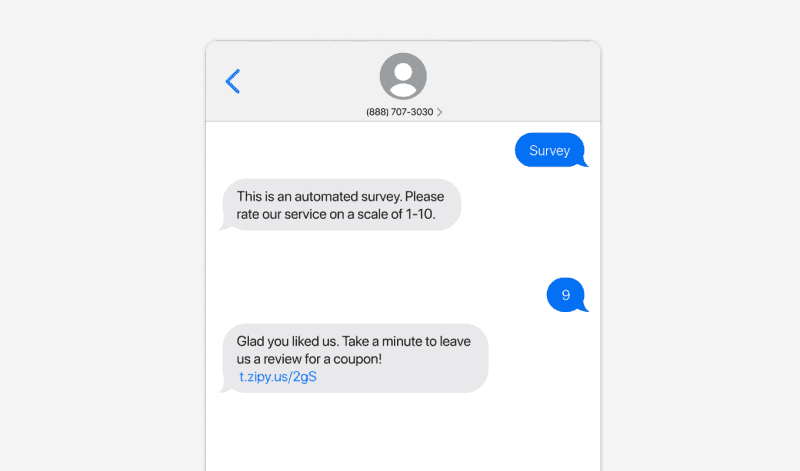
This way, you won’t have to manually ask for feedback or plan it. You can automatically gather valuable insights in your CRM.
You can leverage different messaging platforms such as text messages, WhatsApp, and other social channels.
The idea is to interact with customers - in a way they prefer and ask their experience and opinion.
3. Create Custom Widgets
Feedback widgets is another excellent method of automating feedback collection. You can choose to display customizable widgets in particular locations on your website and utilize them to gather insightful data on visitors.
As a result, you may link feedback to information about the user's device, previous visits, time spent on the site, and other factors.
You can use widgets to gather feedback for a variety of purposes, such as reporting bugs, providing website usability reports, and gathering input about the company as a whole.
4. Automate Drip Emails
Yes, emails! Though they sound outdated, they are still in fashion and people prefer them over long calls and lengthy survey forms.
Hence, you should consider automating your feedback surveys using emails. Here’s how you can do it.
For post-purchase surveys, create an email drip and send it over a defined time. Suppose, a customer purchased a product from your e-store, send them an email after a week to know if they liked the product.
Based on their response, you can then send them another email, after a few days, recommending different products they might like with a sale offer or incentives.
This way, you can know your customers and even retain them.
The same idea applies to lead generation and nurturing, list segmentation, and pre and post events.
5. Chatbot
Today, automation has become synonymous with improved productivity.
The reason most businesses rely on chatbots is to automate all the redundant tasks. However, that’s just the tip of the iceberg. You can leverage chatbots to gather customer feedback, improve customer service, boost lead generation, and do much more.
As for customer feedback surveys, you can define the survey questions in a conversational tone and even schedule it. Take the example of our client Saba Clinics.
Our client relied on the traditional way of collecting customer feedback through outbound phone calls and paper forms. And as they process thousands of patients daily, their existing manual and fragmented feedback collection system was not a good fit.
Here comes WotNot into the picture. We proposed a WhatsApp-based chatbot solution. We used an outbound bot that proactively sent a WhatsApp message to the patients to collect their feedback.
The chatbot asks the patient to give their feedback in the form of ratings, comments, etc. Thus, with the help of an outbound bot, WotNot made the entire feedback system:
Automated
Fast
Convenient for patients
Devoid of human error
Free from manipulation
Similarly, you can use chatbots to gather customer support feedback, about a specific product/service, and anything and everything related to your business.
Chatbot is a most preferable option as it not only automates but boosts customer relationships. The conversational tone, and human touch helps build trust and retain customers in the long run.
Here are all the answers to your chatbot investment doubts.
6. Usability Testing
Usability is crucial for e-commerce and SaaS firms to provide customers with a fantastic experience. They should do several usability tests if they are to create fantastic user experiences. A nice approach to do this is to use questionnaires for automated usability testing.
You can implement such surveys by including a widget on your website or by emailing a link to users. The beautiful thing about usability testing surveys is that the majority of customers will participate because it demonstrates that you respect their input on an unrelated topic.
Other Technical Ways of Automating Customer Survey
1. Create Custom APIs for Complex Use Cases
You can't seem to find an integration that works for your use case? Do not fret! Most SaaS platforms have simple-to-use APIs, which are a communication architecture that enables two apps to communicate with one another.
While connecting SaaS systems requires some programming work, APIs enable your team to create fully customized connections between any platforms you employ. All you have to do is write down:
The platform that needs to be watched out for a particular event (e.g. Salesforce)
The circumstance that should prompt a survey (e.g. a new purchase)
The website where requests to send surveys can be made (e.g. Delighted)
Have you prepared that information?
When you have all the information, loop in your engineering team and get started!
Opinion: This can be time-consuming and costly. This is definitely not recommended for businesses who have to gather feedback more frequently.
2. Integrate Customer Feedback Survey Tools
If you’re using tools like CRM, HelpDesk, and have payment options, it’s easy to automate your feedback survey.
How?
Examine those tools and see which platforms capture crucial information in the customer journey, such as a purchase event or a contact with your support staff?
Then, integrate online customer feedback survey tools with those systems and move forward towards better customer experience!
Best Tools for Customer Survey Feedback Collection
Since consumers are the ones who bring in revenue, having a customer-centric approach is directly correlated with business’s success. All businesses need client feedback since it reveals consumer satisfaction levels and can help spot areas for product improvement. This is essential for SaaS companies because they can quickly transfer client input into product development.
Customer service tools automate the process of gathering feedback and convert it into data that is simple to evaluate. The following are some tools you might want to use:
1. WotNot
WotNot, a no-code bot builder that utilizes conversational marketing to automate customer services and increase customer engagement.
Using this platform, you can create customized chatbots that can be utilized on websites, mobile apps, WhatsApp, Facebook Messenger, and SMS as well as other online channels.
Second, you can use pre-made templates from a library to create company-specific bots.
Thirdly, it offers integrations to add internal systems like ticketing software and feedback mechanisms with the platform.
Wotnot chatbot, further, assists you in evaluating the success of your service by calculating the number of hours and dollars saved.
2. Intercom
Intercom is a prominent customer communication platform. Alongside, it also has a survey tool. This tool helps you in in-context customer surveys, nurture campaigns, and deliver top-notch onboarding experiences. With this tool, you can:
Get product feedback
Ask customers about their onboarding preferences
Capture lead information
3. SurveyMonkey
SurveyMonkey is a go to automated survey tool for many users. This tool supports a large range of features. In addition, it is also easy to integrate into any system. If we talk about its plans, it has three plans:
Team plans
Individual plans
Enterprise
Conclusion
I am sure after reading this, you must have realized that automating customer feedback surveys is easier than you thought. This is possible because of several advanced tools. These tools, you can customize these as per your needs and use them as a feedback survey tool.
For example, you can use WotNot’s outbound bot as per your business requirements, design survey forms in it, and trigger them whenever you want to send out the survey form.
Similarly, you can apply this strategy to all the other tools.
Remember, it’s all about how you interact with customers during purchase, support, and even when obtaining feedback.
So, use the tools wisely! Don’t stop asking customers what they think about your business and products/services.
Last but not least, experiment with different ideas. Try to include survey forms wherever and whenever possible in a balanced way!
Happy surveying!
ABOUT AUTHOR
Bhavyadeep Sinh Rathod
Content Editor, WotNot
He likes technology, chatbots, comedy, philosophy, and sports. He often cracks hilarious jokes and lightens everyone's mood in the team.
